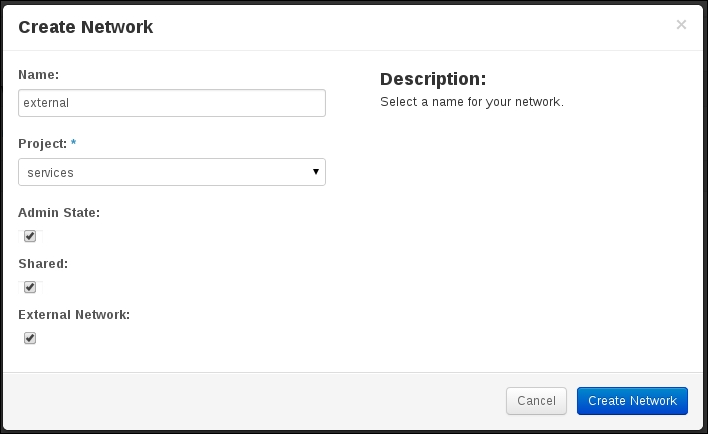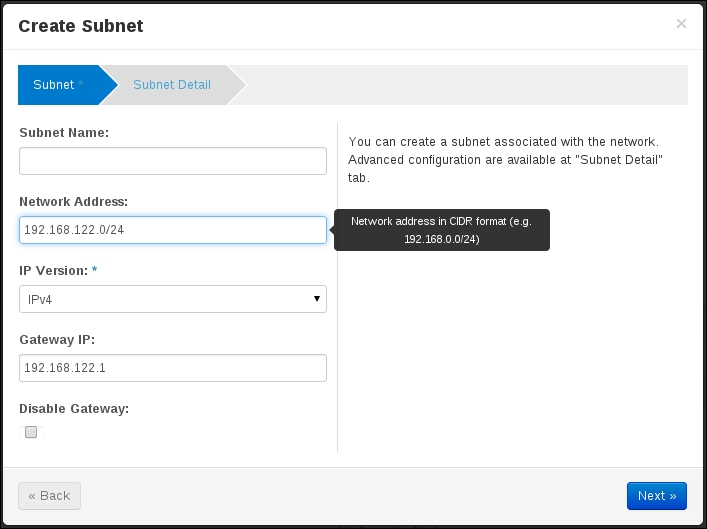Web interface external network setup
Previously, there was preparation done to tie eth1 and br-ex together. This preparation must be done on the command line. Because it is external configuration to OpenStack, it cannot be completed through the OpenStack web interface. You can, however, complete the external network creation through the web interface by performing the following steps:
Start by logging in to the web interface at the Admin user to create the external network and subnet. Select the Networks submenu from the Admin menu and click on Create Network. Give the network a name and flag it as external and shared. This step is encapsulated in the following screenshot:

Once you have created the network, select the network by its name and click on Create Subnet, as shown in the following screenshot:

Fill out the form with the network information for the external pool of IP addresses. Make sure the correct gateway is specified. The following screenshot captures this step:

Move to the Subnet...
























































